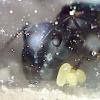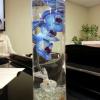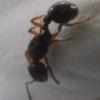1) Does the queen do anything for the eggs other than protect them? Do they essentially develop into larvae on their own?
2) Do queens or workers know their eggs from stranger's eggs?
3) Some of my queens either got messy with their honey water or picked a fight with the cotton and their eggs are in a tiny bit of moisture. Is that ok or are those doomed?






















